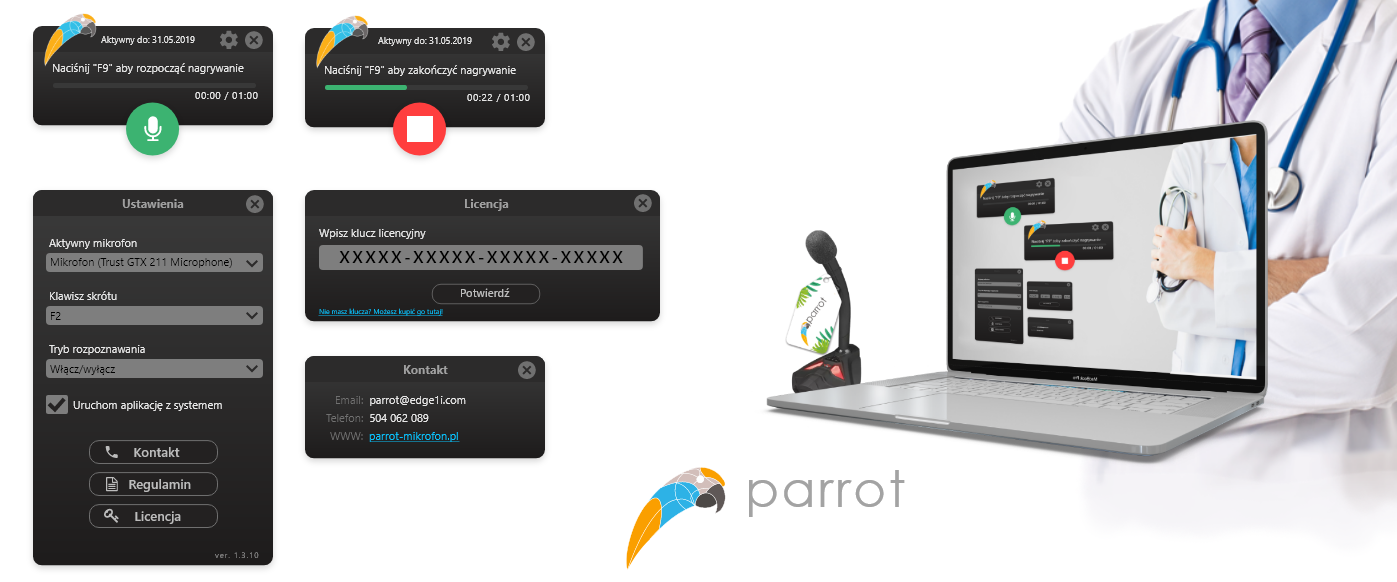PRESCRIPTION WRITING USING VOICE
According to the report “Health at a Glance 2018”, prepared for European countries by the OECD and the EC, it appears that in terms of the number of doctors, Poland ranks at one of the last places in Europe. in Poland, an average of 2.4 physicians per 1000 inhabitants, while the European average is 3.8. During the year, the Polish physician receives an average of 3104 people, including primary care physicians counseling on average over 4,700 patients per year. The growing number of patients and the declining number of doctors result in an increasing amount of workload and less and less time spent on one visit. Significant system changes can improve the situation. Technology is waiting for help.
In Poland, the PHC doctor accepts up to 30 people a day and gives the patient an average of 15 minutes. Such a high rate of physicians leads to the need to shorten the consultations, which, as you can guess, is not welcomed by patients who report more and more complex problems, 15 minutes of a visit and the doctors themselves who are not available for a short visit. they must have an interview, a diagnosis and a formal part, i.e. full documentation of the advice. The latter consumes up to 9 minutes from the entire time of the visit. The bureaucracy therefore absorbs the time that the doctor could spend on the patient or a moment of rest.
The situation is additionally aggravated by the ever smaller number of doctors. According to the report, our country lacks at least 30,000 with an upward trend for this deficit. These are serious problems whose solution depends mainly on actions improving the Polish health care system and people deciding on the quality and pace of change. However, systemic changes mean long-term actions with a significant deferred benefit for both patients and physicians. It turns out, however, that solutions supporting the work of doctors can be found everywhere and may also be new technologies.
DOCUMENTATION SUPPORTED BY ARTIFICIAL INTELLIGENCE
Technology is an ocean of possibilities and solutions that facilitate our everyday life. Not so long ago the mobile phone appeared as a dream come true for wireless digital communication. Today, smartphones, fingerprint readers, voice and gesture recognition technology do not surprise so much, and further achievements quickly fit into the technological reality. Artificial intelligence and its application in industry, business and home are leading the way. Just as touch screens have changed the rules of the smartphone market more than a decade ago, voice control is slowly becoming an indispensable element of everyday life, simplifying it considerably. This solution, which can be successfully used in the work of physicians, allows to reduce the time spent on the documentation of the visit – descriptions, writing prescriptions.
YOU SAY, AND YOU HAVE
There is a solution available on the market that acts as a doctor’s assistant-stenographer. For this purpose, he uses a microphone and speech-processing software for text. Parrot is compatible with most systems used in Polish clinics and operates on the principle of “press and talk”, allowing faster, simultaneous creation of a description of the visit and issuing an electronic prescription. What is extremely important, the solution has 98% effectiveness in recognizing the name of drugs from the reimbursable list. The effect of using a “parrot” is a convenience and shortens the time of documentation creation by an average of 3 minutes during one visit, which at the largest occupancy saves up to 1.5 hours during the doctor’s work day – 90 minutes, which he can devote to patients and their problems.
A simple solution – and although it does not eliminate the problem, is certainly a good step towards improving the work of doctors and a less superficial relationship with the patient, so important at the stage of diagnosis and important for the entire treatment process.
